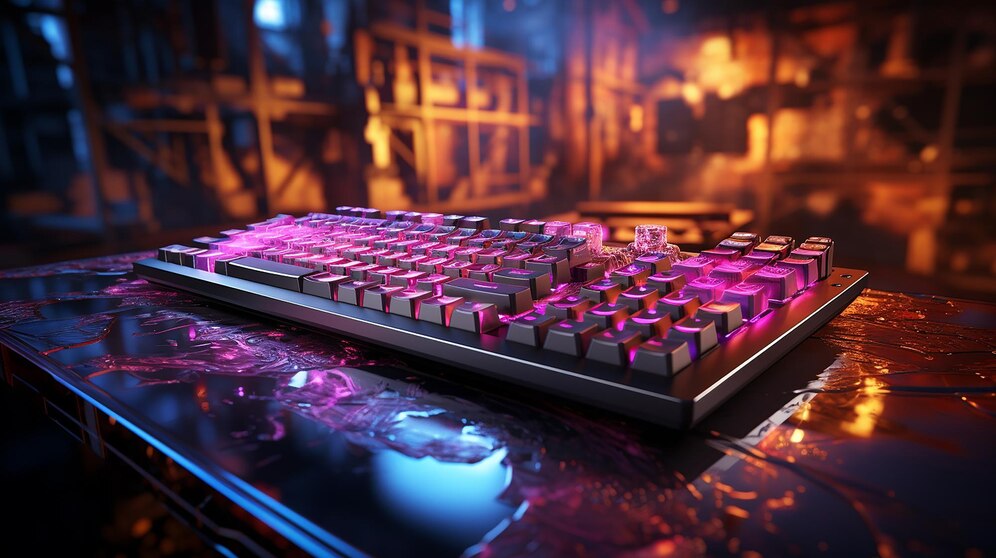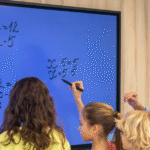In an age where personalization and customization are at the forefront of technology, custom keyboards have become a fascinating niche within the tech community. Unlike mass-produced models, custom keyboards allow users to tailor their typing experience to their exact preferences, blending aesthetics with functionality. Whether you’re a gamer seeking the perfect response time or a writer looking for a comfortable typing experience, building a custom keyboard can be an incredibly rewarding venture. This guide will walk you through the world of custom keyboards, from understanding the basics to creating your dream setup.
The Rise of Custom Keyboards
A New Era in Typing
Custom keyboards have gained significant traction in recent years. What was once a niche interest is now a thriving subculture within the tech community. But why the sudden interest? Here are a few key reasons:
- Personalization: Custom keyboards offer unparalleled opportunities to tailor every aspect of your typing experience, from key switches to keycaps.
- Quality and Durability: Mechanical keyboards, which are a popular choice for custom builds, are known for their longevity and durability compared to standard dome-switch keyboards.
- Aesthetic Appeal: Beyond functionality, custom keyboards are often designed to be visually striking, reflecting the user’s personality and style.
Understanding Keyboard Types
Before diving into customization, it’s crucial to understand the two main types of keyboards you’ll encounter:
- Dome-Switch Keyboards: These are often referred to as “rubber dome” keyboards. They use a rubber dome beneath each key to register keystrokes. While generally cheaper, they can lack the tactile feedback and durability found in mechanical keyboards.
- Mechanical Keyboards: These keyboards use individual switches for each key, providing a distinct feel with each keystroke. Mechanical switches use a combination of springs and plungers to deliver tactile feedback and longevity. They are often favored for their customizable nature and superior typing experience. For example, installing Gateron switches are highly regarded in the mechanical keyboard community for their smooth key presses and reliable performance.
Components of a Custom Keyboard
Key Switches: The Heart of Your Keyboard
Key switches are arguably the most critical component of a custom keyboard. They come in various types, each offering different tactile feedback, actuation force, and noise levels. Here’s a breakdown:
- Linear Switches: These switches provide a smooth and uninterrupted keystroke without tactile bumps or audible clicks. They’re popular among gamers for their quick response time.
- Tactile Switches: Tactile switches provide a noticeable bump when the keypress is registered, offering feedback without the noise of a click. They’re preferred by typists who want to feel each keystroke.
- Clicky Switches: As the name suggests, these switches produce a distinct click sound with each keystroke, which many users find satisfying and noticeable.
Keycaps: Adding Personality and Functionality
Keycaps are the part of the keyboard you interact with, so their design can significantly affect both aesthetics and functionality. Keycaps come in different shapes, sizes, and materials:
- Material: Keycaps are typically made from ABS (Acrylonitrile Butadiene Styrene) or PBT (Polybutylene Terephthalate). PBT keycaps are known for their durability and resistance to shine over time.
- Profile: The profile of a keycap refers to its shape and height. Popular profiles include SA, DSA, and GMK. The profile affects typing comfort and the overall look of the keyboard.
- Design: Custom keycaps can feature various designs, colors, and patterns. They can be simple and sleek or elaborate and themed to match your personal style.
The PCB (Printed Circuit Board): The Keyboard’s Brain
The PCB is the central component that connects all the switches and sends the signals to your computer. When choosing a PCB, consider:
- Layout: PCBs come in different layouts, such as full-size, tenkeyless, and 60%. Your choice will depend on how much functionality you need and your preferred form factor.
- Features: Some PCBs offer additional features like programmable keys, backlighting, and connectivity options (USB or Bluetooth).
The Case: Housing Your Keyboard
The case not only protects your keyboard but also defines its overall look and feel. Cases come in various materials, including:
- Plastic: Lightweight and cost-effective, plastic cases are a common choice for budget builds.
- Aluminum: For a premium feel and durability, aluminum cases offer a solid and elegant option.
- Acrylic: Acrylic cases provide a modern, transparent look and can showcase RGB lighting effects.
Stabilizers: Enhancing Key Stability
Stabilizers are used on larger keys (like the spacebar and enter key) to prevent wobbling and improve keystroke consistency. They come in different types:
- Clip-in Stabilizers: Easy to install and generally provide good stability.
- Screw-in Stabilizers: Offer enhanced stability and are preferred by enthusiasts who want the best performance.
Building Your Custom Keyboard
Gathering Your Components
Before you start building, make sure you have all the necessary components:
- Switches: Choose the type that best fits your typing style and needs.
- Keycaps: Select a design that matches your aesthetic preferences.
- PCB: Pick a layout and features that suit your usage.
- Case: Choose a case that fits your components and style.
- Stabilizers: Ensure you have the right stabilizers for larger keys.
Assembling Your Keyboard
Building a custom keyboard involves several steps:
- Install the Stabilizers: Begin by attaching the stabilizers to the PCB.
- Place the Switches: Insert the switches into the PCB and ensure they are properly seated.
- Mount the PCB in the Case: Secure the PCB to the case, making sure all components are aligned.
- Add the Keycaps: Finally, place the keycaps onto the switches, ensuring they snap into place.
Testing and Fine-Tuning
Once assembled, it’s crucial to test your keyboard to ensure everything works correctly. Use keyboard testing software to check for any issues and make adjustments if necessary.
Custom Keyboards in the Market
Pre-Built vs. DIY Kits
For those who prefer a ready-made solution, pre-built custom keyboards offer convenience with many of the same customization options. However, DIY kits provide a more hands-on approach, allowing for deeper customization and a more personal touch.
Community and Resources
The custom keyboard community is vibrant and supportive. There are numerous forums, online groups, and resources where you can seek advice, share your build, and find inspiration.
The Future of Custom Keyboards
Emerging Trends
The custom keyboard market is continually evolving with new trends:
- Wireless Connectivity: Increasingly, custom keyboards are incorporating wireless options for greater flexibility.
- Advanced Switch Technologies: Innovations in switch technology continue to improve typing experiences.
- Sustainable Materials: There’s a growing focus on using eco-friendly materials in keyboard manufacturing.
Expanding Personalization Options
As technology advances, the possibilities for customization expand. Future developments may include more advanced RGB lighting options, customizable switch layouts, and even integration with smart technology.
Conclusion
Custom keyboards offer a unique opportunity to tailor your typing experience to your exact preferences. From selecting the perfect switches to choosing a stylish case, every aspect of a custom keyboard can be personalized to enhance both functionality and aesthetics. Whether you’re a gamer, writer, or tech enthusiast, building or customizing a keyboard can be a fulfilling project that adds a personal touch to your daily interactions with technology. As the world of custom keyboards continues to evolve, it’s an exciting time to explore and create the perfect keyboard for your needs.







